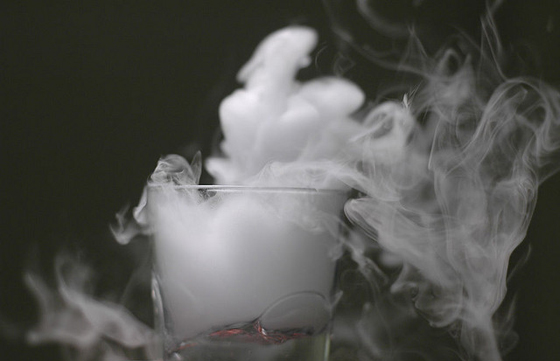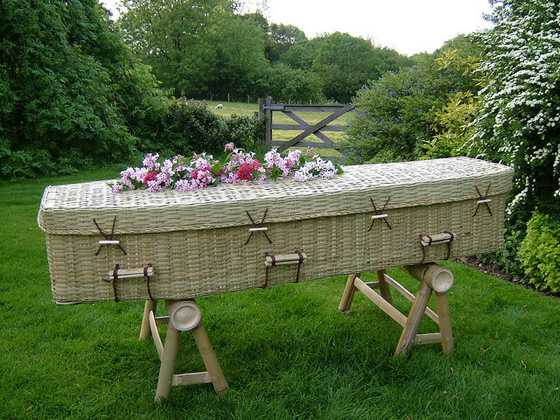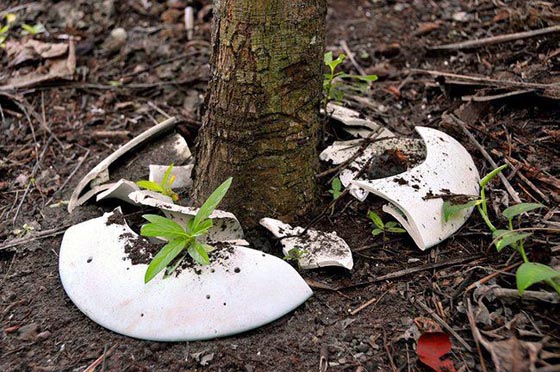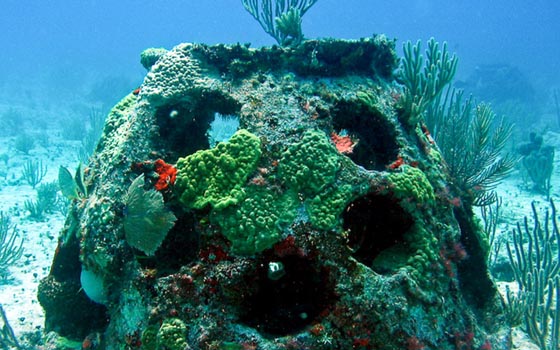
Beyond Greener Caskets: 5 Other Ways You Can Have a Sustainable Death

Let’s face it – death is not fun to think about—but at least we only have to go through it once. Unfortunately for the Earth and the rest of its inhabitants, our mortal passing can continue to defile the planet long after we’re gone.
This is mostly due to the fact that contemporary Western burial methods include a process called embalming. While the preservation of bodies has been recorded in history as far back as Ancient Egypt, the practice of embalming as we know it was popularized during the Civil War as a way to delay decomposition, making it easier to transport the bodies of soldiers back home.
Formaldehyde – the main preserving agent used in the embalming process – is classified as a carcinogen by the World Health Organization and not only inhibits the natural process of decay, but also deposits harmful substances into the soil where it can contaminate local water supplies. This is especially troubling when you consider the fact that about 800,000 gallons of formaldehyde-based embalming fluid is dumped into U.S. cemeteries every year. Not only that, according to the National Geographic, we also end up wasting a huge amount of resources such as wood, steel, and concrete on traditional burials:
American funerals are responsible each year for the felling of 30 million board feet of casket wood (some of which comes from tropical hardwoods), 90,000 tons of steel, 1.6 million tons of concrete for burial vaults, and 800,000 gallons of embalming fluid.
Getting buried 6 feet under also ensures that your body decomposes without oxygen, so instead of producing carbon dioxide and water as it breaks down, your body will start leaking methane—a greenhouse gas that is 25 times more powerful than CO2 as a greenhouse emission.
As you can see, the environmental implications of a traditional burial can add onto an already depressing subject. But it doesn’t have to be this way!
We’ve rounded up the most planet-friendly burial methods around. None of us are planning to bite the dust anytime soon, but with a little research and planning you can make sure that you truly become part of the Earth again.
Photo: Cuba Gallery via Flickr
1. Choose a Natural Alternative to Toxic Chemical Embalming
Except in certain special cases, such as transporting bodies across state lines, embalming is rarely required by law. Depending on the circumstances of death, a cadaver does not pose any health risks for up to three days as long as it’s kept at 65°. Ask your funeral home for the use of a refrigeration unit, dry ice, or Techni-Ice.
2. Turn Yourself into a Tree
The Spiritree is a biodegradable urn that utilizes your earthly remains to contribute to the growth of a tree. Created with an organic bottom shell and a ceramic cover, the growing plant feeds from the bottom shell and your nutrient-rich remains to grow into a regionally native tree of your choice.
3. Transform Your Cremains into Fish Habitat
Utilizing a specialized concrete formula with a neutral pH content, Eternal Reefs uses your cremated remains to construct coral reefs to help revive marine reef habitats by providing a place for micro-organisms a place to land and mature in.
4. Hasten Your Decomposition with a Fungus Suit and Enrich the Earth
The Infinity Burial Suit offered by Coeio is a special garment embroidered with a strain of fungi that works actively to cleanse your remains of the toxins it has accumulated throughout your lifetime and breaks down your body so its vital nutrients can be part of the earth as soon as possible. Watch founder Jae Rhim Lee’s TEDTalk presentation to find out more!

Photo: Niclas via Flickr
5. The Ultimate in Recycling: Donate Tour Body to Science!
A totally different alternative to funerals or burials, body donation actively benefits others and saves lives by contributing to medical research and advancement. Just a few of the areas in which whole body donations have made an impact in are heart disease, HIV, Alzheimer’s research, and so on. Try contacting your nearest university or professional society, such as the International Institute for the Advancement of Medicine or the American Association of Tissue Banks (AATB) to help find placement as a deceased donor.

Photo: Natural Endings via Flickr
And Of Course: Forego concrete vaults and toxic burial containers—Go biodegradable if you do go for a grave.
Though concrete does come from natural sources, the mining and manufacturing process of cement and concrete results in environmental harm. In addition, many caskets contain finishes and adhesives that are harmful to the environment.
Companies like Nature’s Casket, Passages International, and Piedmont Pine Coffins are all certified by the Green Burial Council, North America’s leading environmental certification organization for green burial standards.
Main image via Aneneome Jones on Flickr.







